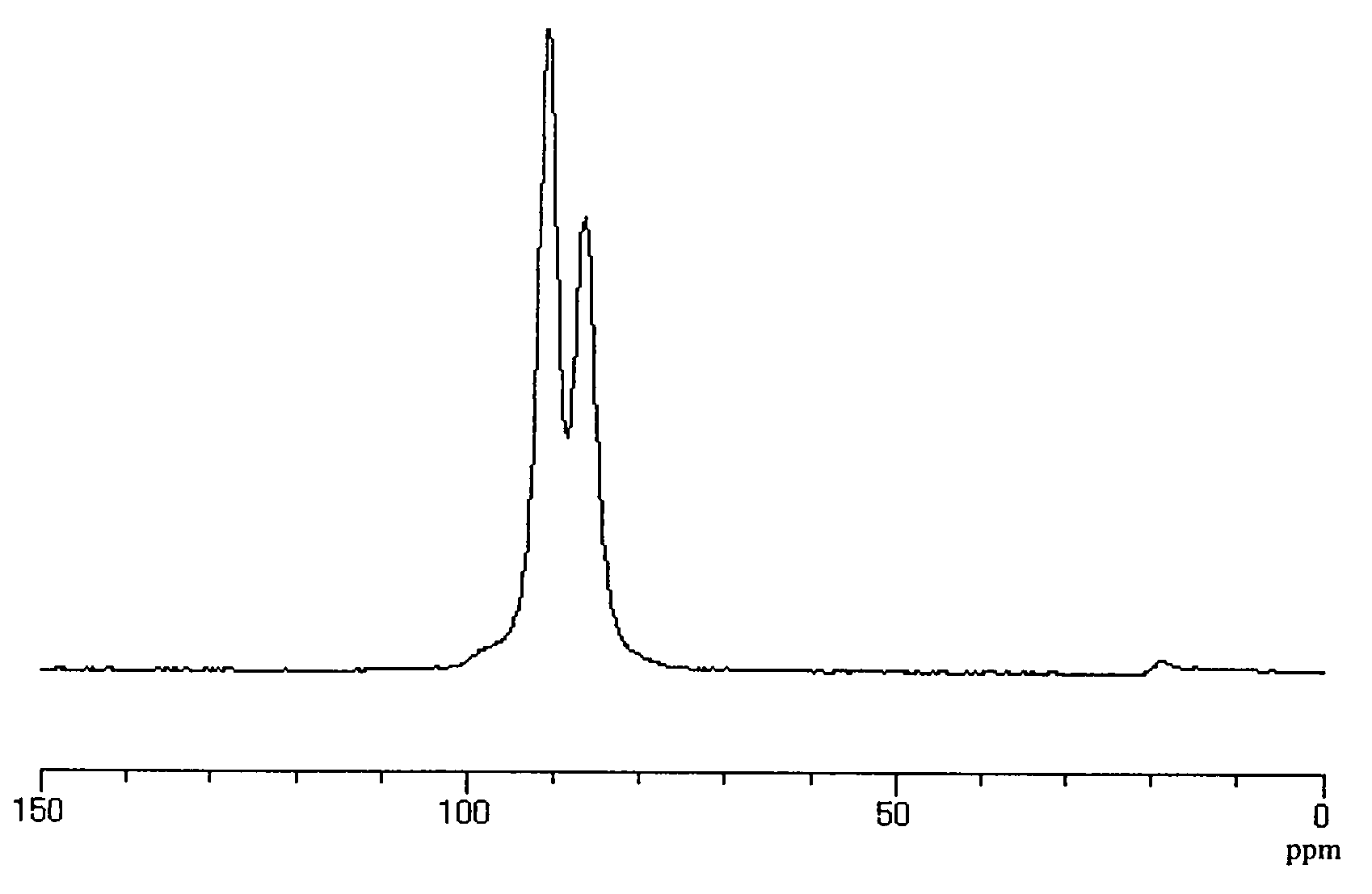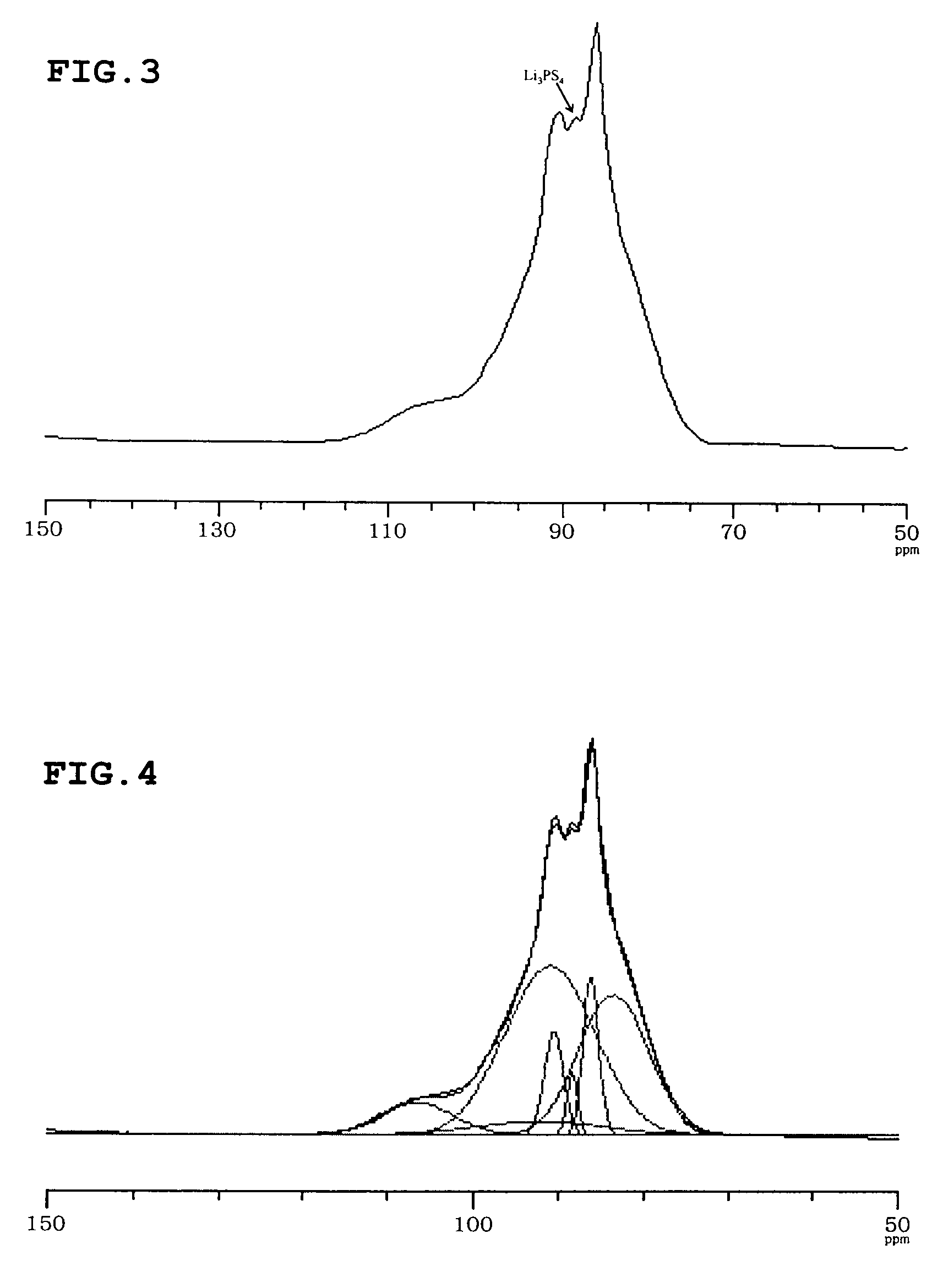Lithium ion conductive sulfide-based solid electrolyte and all-solid lithium battery using same
a technology of solid electrolyte and lithium battery, which is applied in the direction of conductive materials, final product manufacturing, climate sustainability, etc., can solve the problems of liquid leakage or risk of ignition, bursting or other problems and the application range of organic liquid electrolyte is limited, so as to achieve high lithium ion conductivity
- Summary
- Abstract
- Description
- Claims
- Application Information
AI Technical Summary
Benefits of technology
Problems solved by technology
Method used
Image
Examples
example 1
[0076]0.6508 g (0.01417 mol) of highly pure lithium sulfide (manufactured by Idemitsu Kosan Co., Ltd., purity: 99.9%) and 1.3492 g (0.00607 mol) of diphosphorusus pentasulfide (manufactured by Sigma-Aldrich Japan) were mixed sufficiently, and the powder was put in an aluminum pot and the pot was completely sealed.
[0077]The pot was installed in a planetary ball mill, and mechanical milling was performed. For the first several minutes from the start, milling was conducted at a small number of revolution (85 rpm) with the aim of fully mixing the starting materials. Thereafter, the number of revolution was gradually increased, and mechanical milling was conducted at 370 rpm for 20 hours.
[0078]Evaluation by X-ray analysis of the resulting powder revealed that the powder was vitrified (sulfide glass).
[0079]The resulting sulfide glass was subjected to heat treatment at 300° C. for 2 hours to be ceramized, whereby a solid electrolyte was formed.
[0080]The ion conductivity of this solid elect...
example 2
[0082]A solid electrolyte was prepared and evaluated in the same way as in Example 1, except that the heat treatment of the sulfide glass was changed to 220° C. for 240 hours. The ionic conductivity of this solid electrolyte was 2.6×10−3 S / cm.
example 3
[0083]A solid electrolyte was prepared and evaluated in the same way as in Example 1, except that the heat treatment of the sulfide glass was changed to 330° C. for 1 hour. The ionic conductivity of this solid electrolyte was 5.0×10−3 S / cm.
PUM
| Property | Measurement | Unit |
|---|---|---|
| Temperature | aaaaa | aaaaa |
| Temperature | aaaaa | aaaaa |
| Temperature | aaaaa | aaaaa |
Abstract
Description
Claims
Application Information
 Login to View More
Login to View More - R&D
- Intellectual Property
- Life Sciences
- Materials
- Tech Scout
- Unparalleled Data Quality
- Higher Quality Content
- 60% Fewer Hallucinations
Browse by: Latest US Patents, China's latest patents, Technical Efficacy Thesaurus, Application Domain, Technology Topic, Popular Technical Reports.
© 2025 PatSnap. All rights reserved.Legal|Privacy policy|Modern Slavery Act Transparency Statement|Sitemap|About US| Contact US: help@patsnap.com



